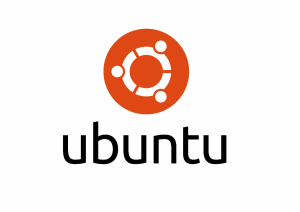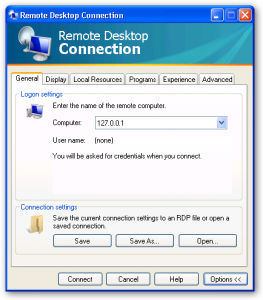The confusion with cloud comes from the wide adoption of the term when describing most (or in some cases any) forms of hosting – shared or managed. It has become synonymous with virtualization, on-demand services, outsourcing and many more terms which have actually been in use within the market before the term ‘cloud’ was coined, and have become important considerations in their own right when reviewing IT strategies and plans.

The National Institute of Standards and Technology (NIST), cites the definition of cloud computing as:
“…a model for enabling convenient, on-demand network access to a shared pool of configurable, computing resources (e.g. networks, servers, storage, applications and services) that can be rapidly provisioned and released with minimal management effort or service provider interaction.”
The question is: how much does this differ from the essential concepts of managed hosting? Managed Hosting is, by definition: an outsourced set of products and services, which can supplement or replace a company’s internal IT plan. In essence, the two terms both describe a service delivery method by which business and web applications and tools are accessed, stored and managed.
At the moment, three distinct cloud hosting service models can be identified:
- Cloud Infrastructure as a Service
- Cloud Software as a Service
- Cloud Platform as a Service
This is another way to demonstrate how clients should see elements of a cloud as a tier of managed hosting. There should be a differentiation between the cloud models as they each offer varying advantages and disadvantages to IT strategies, further confirming the need to identify end goals before embarking on any type of cloud hosting service. Here you will get know all about meadewillis.
How to Choose Hosting
When looking at shared hosting, dedicated hosting, managed hosting, or co-location as an outsourced IT solution, clients will undergo a justification process of their own requirements and needs. In the case of managed hosting, it is with the assistance and advice of an account manager, hopefully, aided by an external consultant in the other cases. They will then weigh up the current and future managed hosting needs. It appears that with the emergence of cloud as a service consumers and businesses are keen to “jump on the bandwagon” to receive the multiple and inevitable benefits of cloud computing without much concern for this basic process of project validation.
The main features & capabilities of the 3 most prevalent models (from the NIST):
Infrastructure as a Service
- Provides the consumer with the capabilities to provision processing, storage, networks, and other fundamental computing resources where the consumer is able to deploy and run arbitrary software, including operating systems and applications.
- The consumer does not manage or control the underlying cloud infrastructure but has control over the operating systems, storage, deployed applications, and possibly limited control of select network components. e.g. host firewalls.
Software as a Service
- Provides the consumer with the capabilities to use the provider’s applications, running on a cloud infrastructure.
- The apps are accessible from various client devices.
- The consumer does not manage or control the underlying cloud infrastructure or even individual application capabilities, with the exception of limited user-specific application configuration settings.
- Examples include: Basecamp, Microsoft, Sharepoint, Oracle, SAP, Google Apps, Salesforce.com.
Platform as a Service
- Provides the clients with the capability to deploy onto the cloud infrastructure consumer-created or acquired applications created using programming languages and tools supported by the provider. In additon, one can use Entity Extraction, which is a text analysis technique that uses Natural Language Processing (NLP) to automatically pull out specific data from unstructured text, and classifies it according to predefined categories.
- Consumer does not manage or control the underlying cloud infrastructure but has control over the deployed applications and possible applications hosting environment configurations.
- Examples include: Amazon EC2, Amazon S3, Zoho, Iceberg, LongJump
Especially in the case of the cloud infrastructure-as-a-service model, managed services providers can continue with business as usual simply by making a few tweaks to their products. In fact, it could be even said that cloud has simply been applied to the normal service rather than drastically transforming or replacing it.
The “Virtual Private Cloud” or “Virtual Shared Cloud” terms could simply be seen as virtualised managed hosting environments created using software such as VMware or HyperV. A virtual environment is still essentially served by either a dedicated or shared physical server located within a data centre.
Important Questions:
A business should not let the buzz words which are inherent in the industry distract from making sure that their business goals and plans are understood and properly met by any outsourced solution they enter in to, cloud or otherwise. Questions such as:
- What is the main objective of the project? (cost savings, reduced management time, security, scalability)
- Will the project transfer easily to a cloud service models?
- Does the provider’s service level agreement meet the project targets and requirements?
These are just a taste of what any company or consumer should ask themselves when investigating a new environment, especially when delving in to a relatively new service model.
How do I use Cloud?
There are multiple ways in which the term Cloud is being used but, realistically how does a company apply it?
Cloud technologies such as the ones from Delphix can help companies use their hosting budget efficiently, through the use of appropriate hardware for their environments.
1. Like any business tool, cloud computing will not cut costs by itself. There seems to be a lot of advertising out there claiming that all cloud products will significantly reduce expenditure, no matter how – or if you know how – to implement them. First of all, it is sensible to look at Cloud technologies and ask HOW they fit into both your business plans and your budget.
2. Cloud technologies are not an all-encompassing business solution to solve all technical and expenditure woes. They need to be used in conjunction with other technologies and features in order to optimize your online environment.
3. If you need an environment that meets certain universal security standards and/or 24/7/365 support, than simply placing your data in the cloud isn’t enough – you will need a shopping list of requirements, plus the technologies and features that meet them.
4. Efficiency is often the word paired with cloud by marketers trying to make the terms synonymous, and thereby continuing cloud’s reputation as being the IT wunderkind of the business world. Of course all businesses should strive for efficient use of technology, resource, and hardware – with cost efficiency being right up there at the top of most ‘must-have’ lists.
But cost efficiency does not always equal short-term savings, and in the same way that one sometimes needs to ‘spend money to make money’ it is not unfair to say that one could ‘spend money to save money….later’. In other words, using one’s cloud budget efficiently to meet client needs, in order to increase revenue, and also to save on future hardware or resource costs.
You can achieve the environmental elasticity that you require if you are willing to spend the appropriate amount of money for your cloud aims. Just remember to be elastic in your cost expectations and everything will be just fine.



